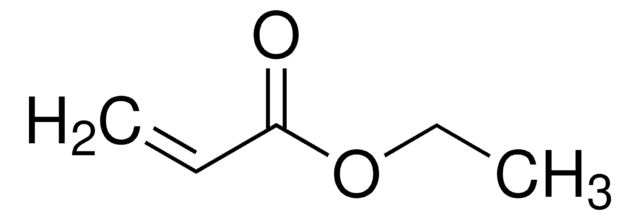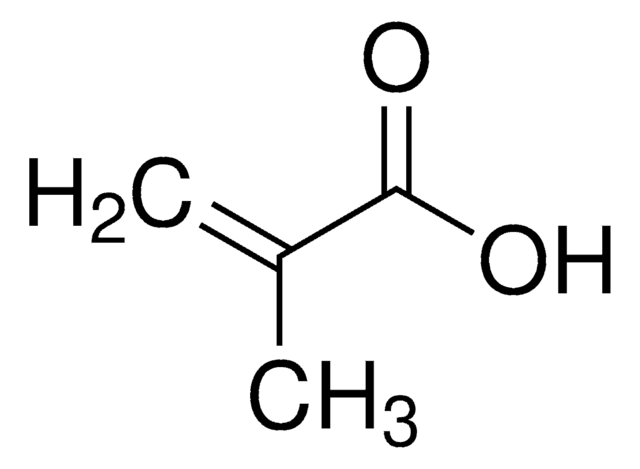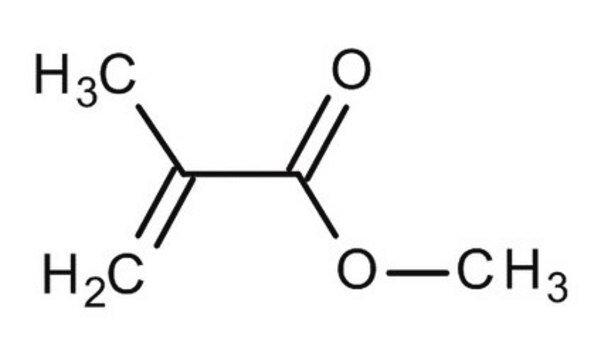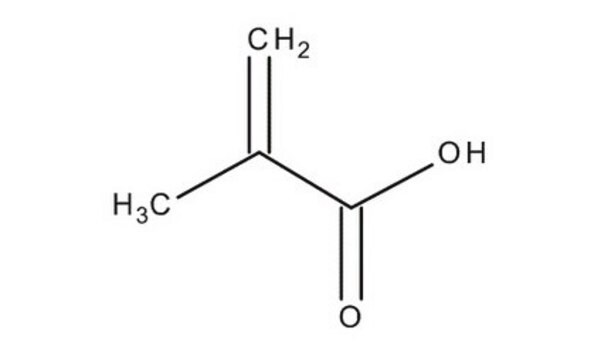Wichtige Dokumente
W241811
Ethylacrylat
≥99.5%, stabilized
Synonym(e):
Acrylsäureethylester, Ethyl-2-Propenoat
About This Item
Empfohlene Produkte
Biologische Quelle
synthetic
Qualitätsniveau
Qualität
Kosher
Einhaltung gesetzlicher Vorschriften
FDA 21 CFR 117
Dampfdichte
3.5 (vs air)
Dampfdruck
31 mmHg ( 20 °C)
Assay
≥99.5%
Form
liquid
Selbstzündungstemp.
721 °F
Enthält
10-30 ppm MEHQ as stabilizer (synthetic)
Expl.-Gr.
12.1 %
Brechungsindex
n20/D 1.406 (lit.)
bp
99 °C (lit.)
mp (Schmelzpunkt)
−71 °C (lit.)
Dichte
0.918 g/mL at 25 °C (lit.)
Anwendung(en)
flavors and fragrances
Dokumentation
see Safety & Documentation for available documents
Nahrungsmittelallergen
no known allergens
Organoleptisch
plastic
SMILES String
CCOC(=O)C=C
InChI
1S/C5H8O2/c1-3-5(6)7-4-2/h3H,1,4H2,2H3
InChIKey
JIGUQPWFLRLWPJ-UHFFFAOYSA-N
Suchen Sie nach ähnlichen Produkten? Aufrufen Leitfaden zum Produktvergleich
Verwandte Kategorien
Allgemeine Beschreibung
Anwendung
- Refractive index adjustable intraocular lens design to achieve diopter control for improving the treatment of ametropia after cataract surgery.: Diese Studie befasst sich mit der Verwendung von Ethylacrylat bei der Entwicklung von Intraokularlinsen mit anpassbarem Brechungsindex, mit dem Ziel, die Visusergebnisse bei Patienten nach Kataraktoperation durch eine anpassbare Dioptrienkontrolle zu verbessern (Hong et al., 2024).
Haftungsausschluss
Signalwort
Danger
Gefahreneinstufungen
Acute Tox. 3 Inhalation - Acute Tox. 4 Dermal - Acute Tox. 4 Oral - Aquatic Chronic 3 - Eye Irrit. 2 - Flam. Liq. 2 - Skin Irrit. 2 - Skin Sens. 1 - STOT SE 3
Zielorgane
Respiratory system
Lagerklassenschlüssel
3 - Flammable liquids
WGK
WGK 2
Flammpunkt (°F)
48.2 °F - closed cup
Flammpunkt (°C)
9 °C - closed cup
Hier finden Sie alle aktuellen Versionen:
Besitzen Sie dieses Produkt bereits?
In der Dokumentenbibliothek finden Sie die Dokumentation zu den Produkten, die Sie kürzlich erworben haben.
Kunden haben sich ebenfalls angesehen
Unser Team von Wissenschaftlern verfügt über Erfahrung in allen Forschungsbereichen einschließlich Life Science, Materialwissenschaften, chemischer Synthese, Chromatographie, Analytik und vielen mehr..
Setzen Sie sich mit dem technischen Dienst in Verbindung.










